Citroen e-Berlingo Review 2025
Citroen e-Berlingo At A Glance
With a longer electric range than ever before, the latest Citroen e-Berlingo could be enough to encourage you to make the switch from diesel to an electric van. Read our full Citroen e-Berlingo review to find out if the latest-generation model fits your needs.
Heavily revised for 2024 with new front-end styling, impressive Advanced Comfort Seats and a more mature cabin, the most important change over the previous Citroen e-Berlingo is its improved battery and motor, which boost the claimed overall range of the plug-in model from 171 miles to 205 miles (on the WLTP mixed cycle), a 20% improvement.
This is partially due to a new regenerative braking system, which can be activated based on three different levels using steering wheel-mounted paddles, while the 50kWh battery pack offers further capacity.
Otherwise, the Citroen e-Berlingo is a practical van with two different body length options. The shortest is called the M and the biggest the XL, which may appear confusing, but is explained by the fact that S and L models exist in other markets thanks to the modularity of the platform.
There’s also a crew cab variant on the XL, with seats that can be folded away and a clever pop-up second bulkhead to give the best of both worlds.
Two trim levels are offered: the Citroen e-Berlingo Enterprise and the Citroen e-Berlingo Driver. The former is more basic, while the latter is a plusher model aimed at small business and private users who want a higher level of specification.
By taking the electric range up to 205 miles, the Citroen e-Berlingo has broader appeal to those who operate outside of an urban environment, making it ideal for small business users who need it to get from job-to-job within a particular region.
It’s still less than half of the range offered by a diesel Citroen Berlingo, though, so its appeal is still limited, albeit less so than before.
The Citroen e-Berlingo is also compatible with CCS rapid charging, with a maximum speed of 100kW – double that of its predecessor and allowing a 0-80% charge in around 30 minutes on a 100kW charger.
The on-board charger, meanwhile, is a 7kW unit compatible with most home sockets, while a three-phase compatible 11kW charger is offered as an option for larger business users.
Another neat feature on the Citroen e-Berlingo is its EPTO, or Electric Power Take Off, which allows the use of electric power tools or equipment from a socket in the van.
Driving the Citroen e-Berlingo
As with the other versions of the Citroen Berlingo, the electric model benefits from a neat and well-trimmed interior with a new digital instrument cluster that’s both fuss-free and easy to use, and a concentric steering wheel that allows better access to the cabin.
In the Citroen e-Berlingo, the instruments reflect both remaining battery and projected range, measured against driving style.
The main controls are operated either via the 10-inch touchscreen, with the exception of the heating and ventilation switches, which are a tad fiddly.
Both specification levels also come with Citroen’s unique Advanced Comfort seats, which are exceptional. They feel a bit soft when you first sit in them, but once settled in the seats use memory foam to adjust to your body.
They constitute a welcome first in the van industry, and one that others could do well to follow.
There’s a good driving position with excellent all-round visibility, helped by Citroen’s new Dynamic Surround View system which projects a rearward image of the van to the rear-view mirror housing.
It’s helpful for changing lanes and driving in traffic, but unlike a traditional mirror, the camera system makes it difficult to judge the distance of following vehicles.
Drive is selected via a tiny shift toggle ahead of the touchscreen, while the amount of regenerative braking can be controlled via steering wheel buttons that adapt the amount of feedback.
In its maximum setting, it can’t bring the van to a stop but it can get quite close, and in urban use this will help maximise the overall range. However, out on the open road it slows the van a bit too much for comfort.
There are three driving modes: Eco, Normal and Power. Each delivers a different power output, and the 207-mile range applies only to Eco mode.
In Eco, the Citroen e-Berlingo delivers 81PS; this rises to 109PS in Normal; and in Power mode it increases again to the full 136PS. Eco mode is suitable for most driving in town.
There’s also a helpful collection of safety equipment, including lane departure warning, blind spot assist, hill start assist, active safety-assisted braking and hill descent control.
Citroen e-Berlingo interior
Not much has changed with the layout of the Citroen e-Berlingo compared with the previous model.
At the business end, it remains extremely functional – it’s 4.4 metres in length, yet three-quarters of this (3.3m) is given over to the load area.
This is easily enough to swallow a Euro pallet with plenty of room to spare, while there are multiple lashing points and a single side-loading door (a twin side door model is offered as a factory option).
The XL version, meanwhile, is 4.75 metres long and has a carrying capacity of 3.8 cubic metres.
The crew cab variant is only offered on the XL, and comes with a load volume of 1.8 cubic metres with the seats in place. Again, this still leaves enough space to fit in a full pallet.
Both M and XL versions have a flat load bay and minimal wheelarch intrusion, while there’s also an Extenso Cab option, which uses a part bulkhead and folding passenger seat to extend one side of the load bay further.
This also provides the added benefit of the passenger seat folding to become a desk or worktable if needed.
In addition, the Citroen e-Berlingo has an impressive payload for an electric van – 780kg for the standard model and 751kg for the heavier XL – with a 750kg towing weight where needed.


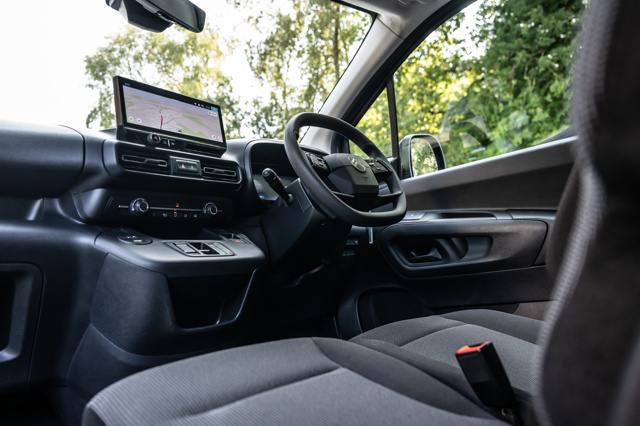
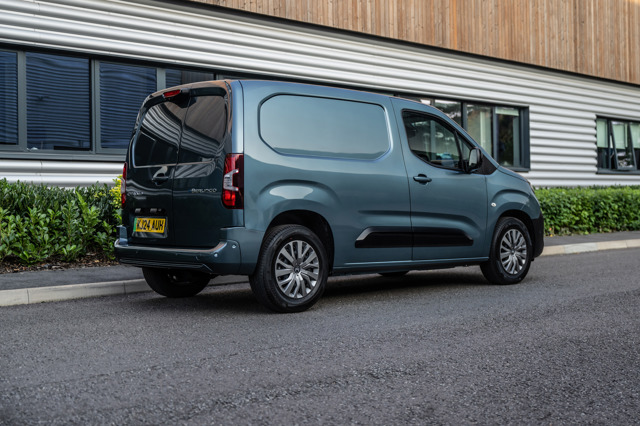
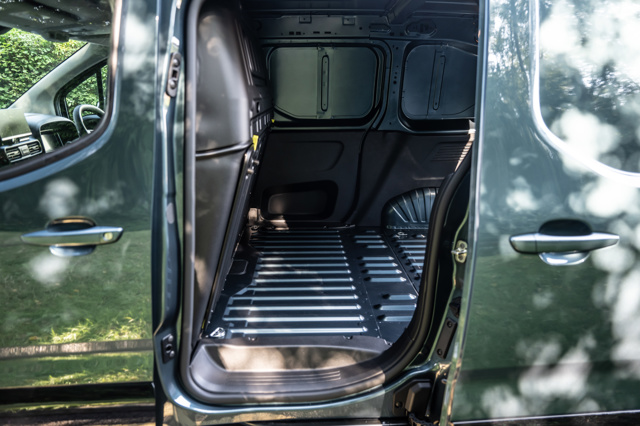
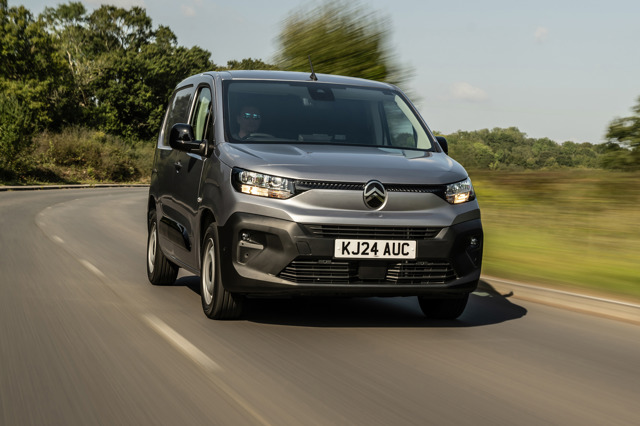
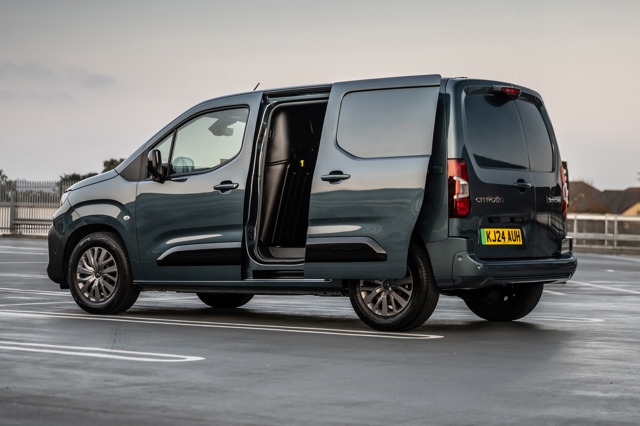
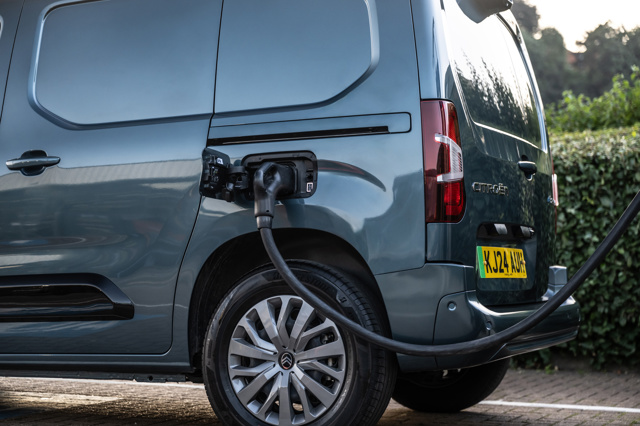
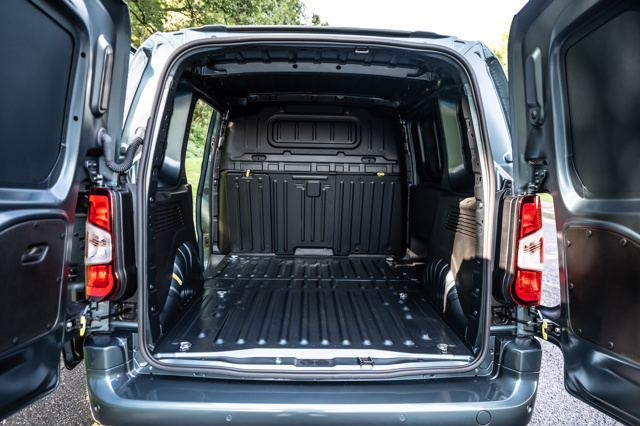

 Excellent payload for an electric van. Superb to drive. Keen pricing. Improved range.
Excellent payload for an electric van. Superb to drive. Keen pricing. Improved range.
 Fiddly switchgear.
Fiddly switchgear.